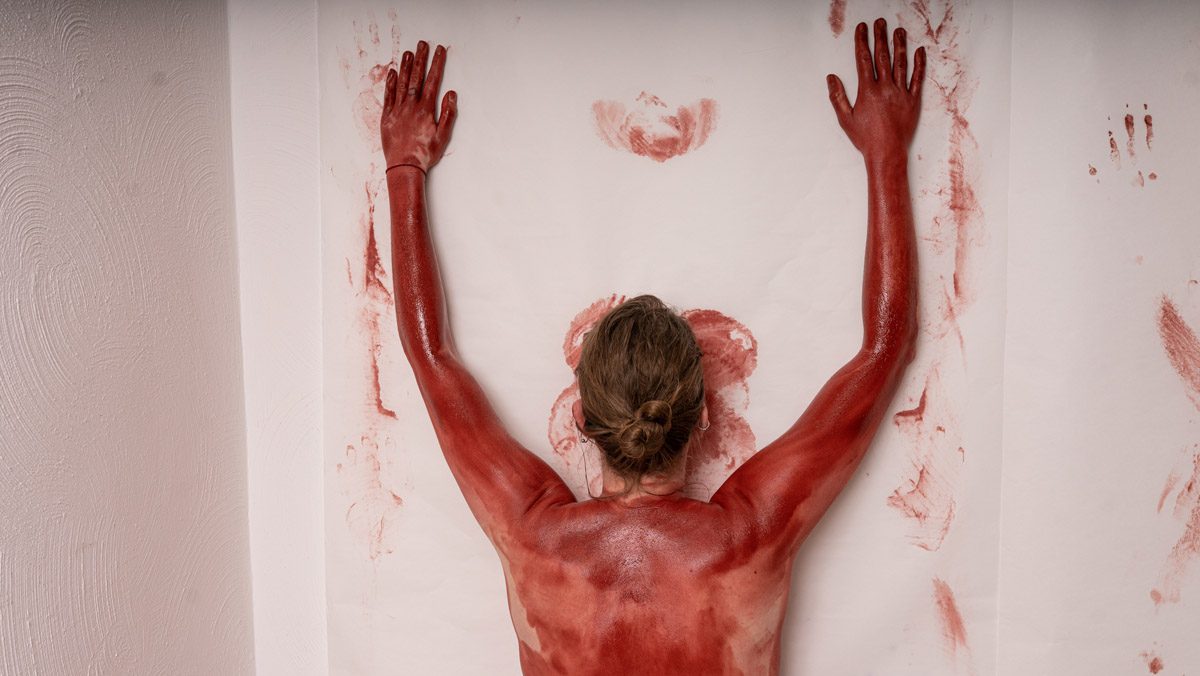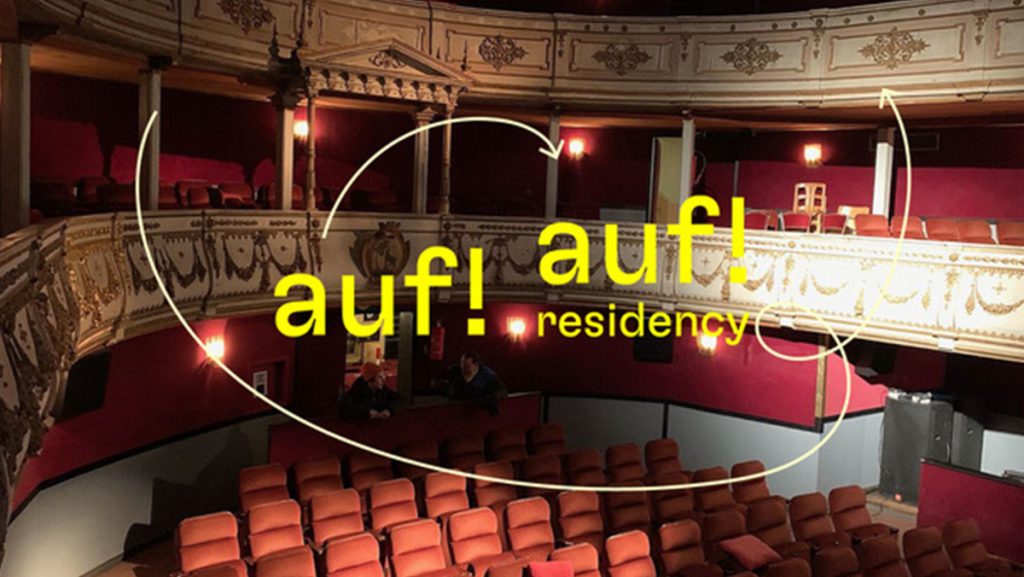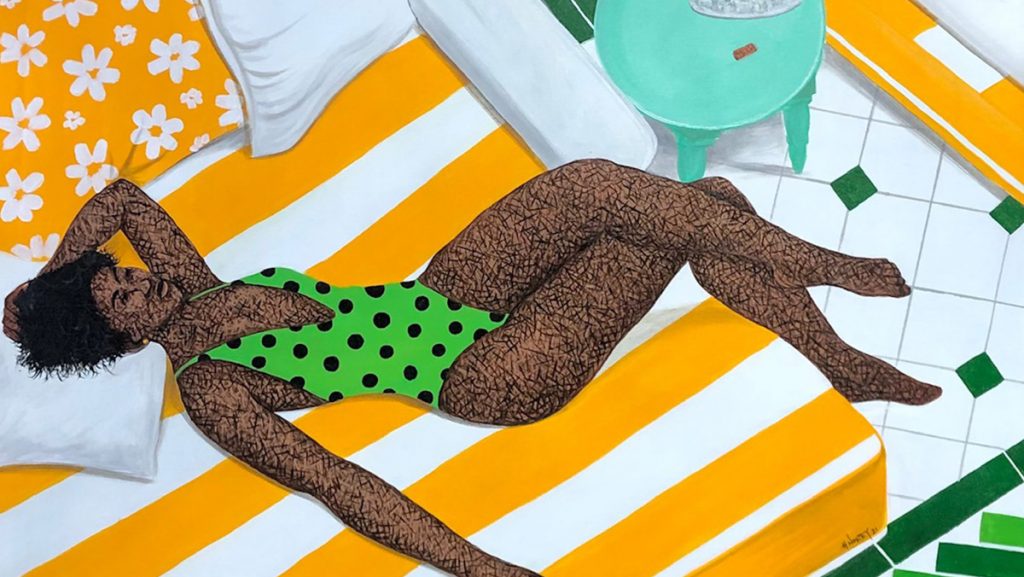Since 2015 she takes part as a volunteer on archaeological projects and collaborates with speleologists from Mexico and Slovakia. Since 2010 she has been participating in residencies, solo and group exhibitions in Germany and worldwide. In 2019, she received an 3rd place award for painting for young artists in Slovakia.
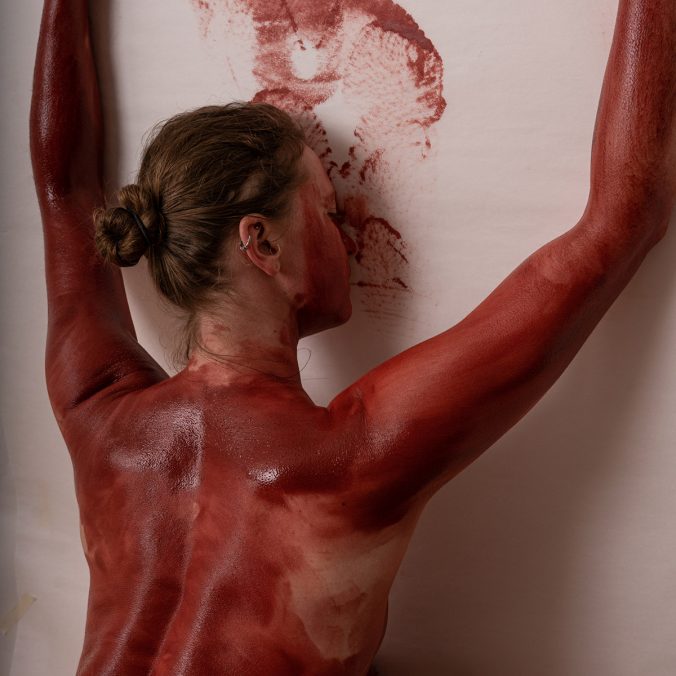
Following pictures shows the process how I work (foto credits: Petra Barathova): 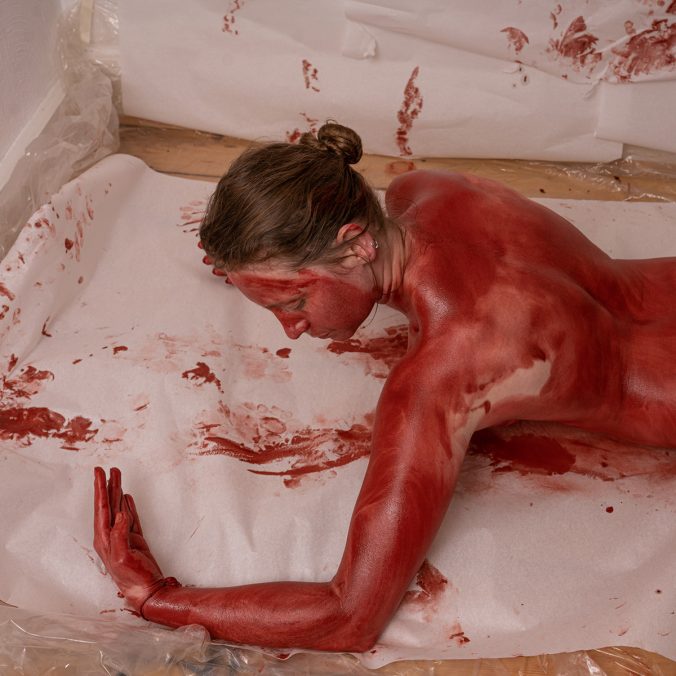
Following pictures shows the process how I work (foto credits: Petra Barathova): 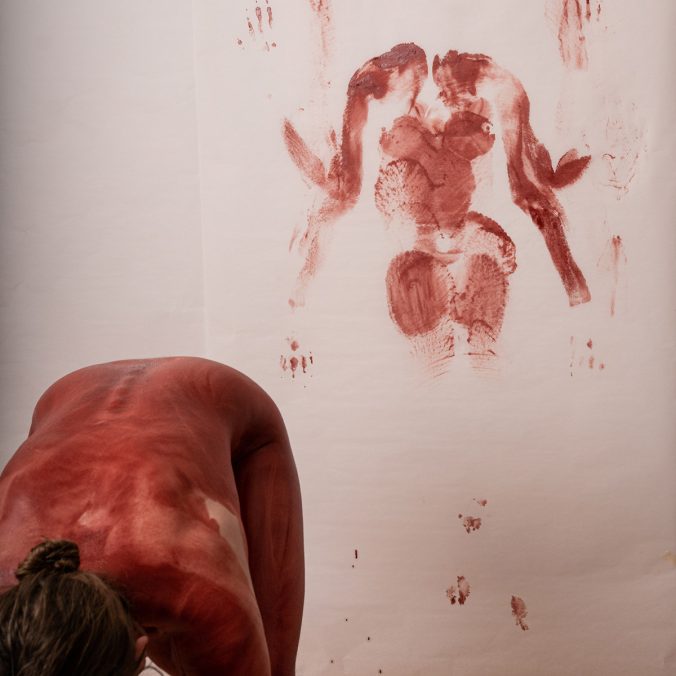
Following pictures shows the process how I work (foto credits: Petra Barathova):
What are the impulses behind your work?
It is mostly about finding the balance between my visions, things that interests me, which mostly have a metaphysical character and I cannot physically grasp them and their materialisation into a motive or artwork itself. And this constant need and desire to grasp it is, I think, my biggest impulse. In my case, the impulses are coming more from the inside, as they are emotional and are more “divine” or are based on my perceptual sight rather than the depiction of reality. I get often inspired by prehistorical art, cave paintings, archaic forms, mythologies, and religious background of different cultures and of course, nature. Sometimes just to experience being at some specific place already gives me a lot to think about.
Through my artistic process I want to experience it again, to understand it, to love it, to destroy it, to research it. I want to share this experience with the viewers, so it will become a co-experience and include them into my artistic process.
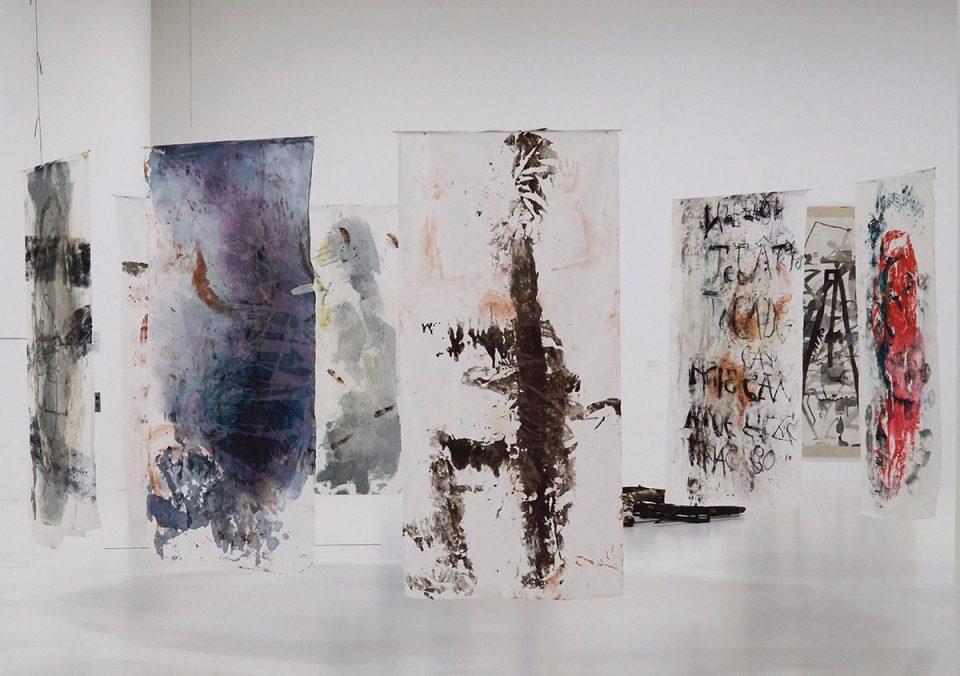
What topics do you cover?
One of my most important references is the art of prehistorical cultures and cave paintings, especially handprints. Researching and going back to these topics helps me to re-think the think processes in our society today including environmental and social issues and the relations between them. I often combine them with my autobiographical stories which could be expressed in my work by using my own body as a painting tool. My work is based on my own personal experience and knowledge about different cultures, medicine, religion, sociology, biology, and other disciplines which I transfer into a visual form. I don’t want to illustrate this knowledge in my work directly, they serve as a tool how can I understand the world: the micro and macrostructures in nature and medicine, structure of an atom, a cell, a whole body, or the whole universe. I work with my perception which I place into imaginary space that is endless.
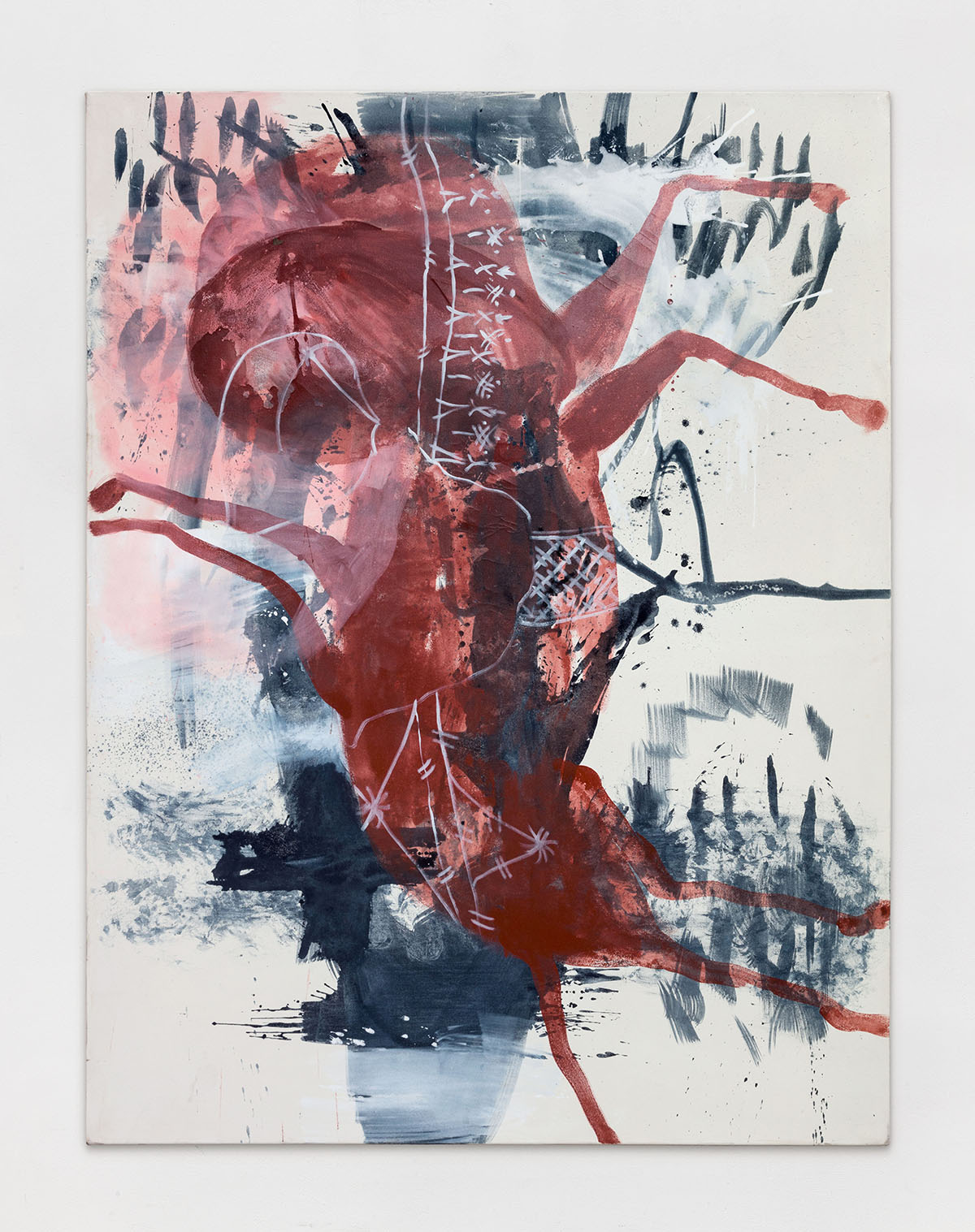
Do you have a muse? Who do you talk to most often about your work?
I do not have a particular muse, but mostly it is someone or something that is in my immediate proximity. I like to talk to all kinds of people including my colleagues, family, friends, and people that I accidentally meet on the street. There are no preferences. I like very much how different perspectives people can have or how differently they perceive my work. There are no boundaries and I try to stay open towards it.
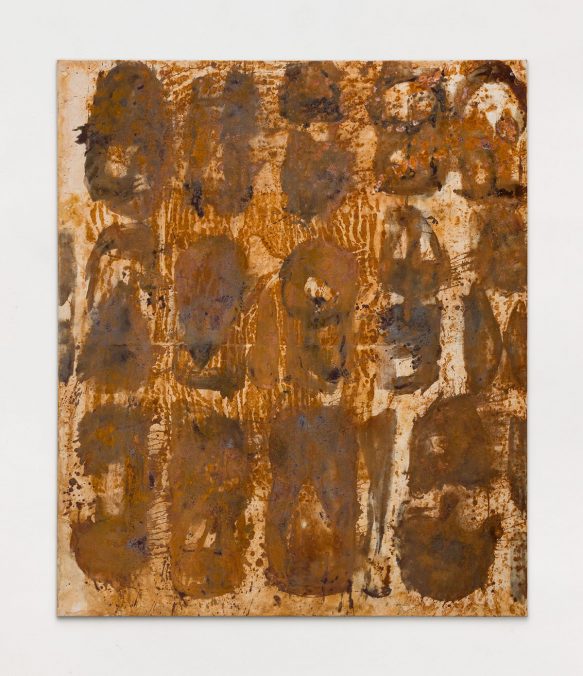
,,Canisters“, pigments and rust on canvas, 160 cm x 190 cm, 2021 (foto credits: Johannes Bendzulla) 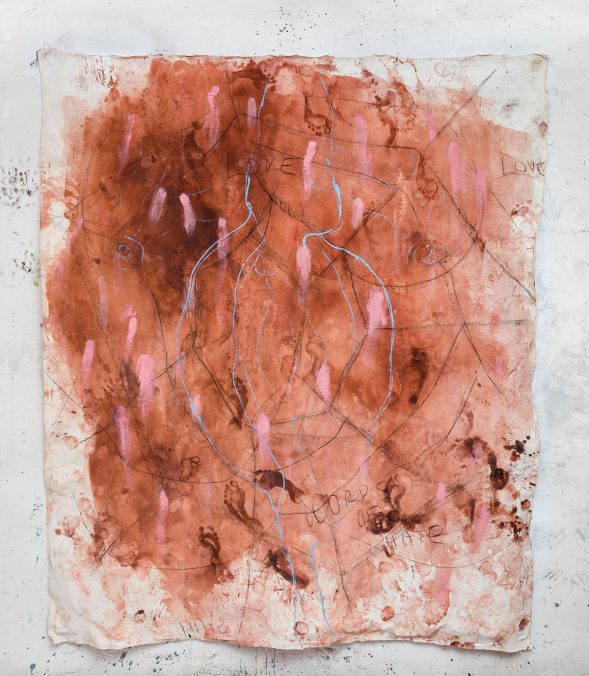
,,Words of love/words of hate“, acrylic, body-prints and charcoal on unstretched canvas, 220 cm x 250 cm, 2020 (foto credits: Johannes Bendzulla)
,,Words of love/words of hate“, acrylic, body-prints and charcoal on unstretched canvas, 220 cm x 250 cm, 2020 Photos: Johannes Bendzulla
Which techniques and expressions are used in your art work?
I love experimenting with different kinds of materials, researching, redoing etc. Mostly I use natural materials, pigments, resin, rust, my hair. A big role has my own body with which I create body-prints which is a way to express not only figurative aspects but transcend myself through the work and create an “individual mythology”. I also enjoy working with paper because of its fragility and unstretched canvases, that allow me to go crazy. For me, physical experience with the material and environment is substantial. I play with the primordial symbolic of archaic language that appears mostly as an abstract moment in my work.
That is why I often let inspire myself by the prehistorical cave paintings. I understand the process of emergence of my work as a performative act dependant on a place where I work.
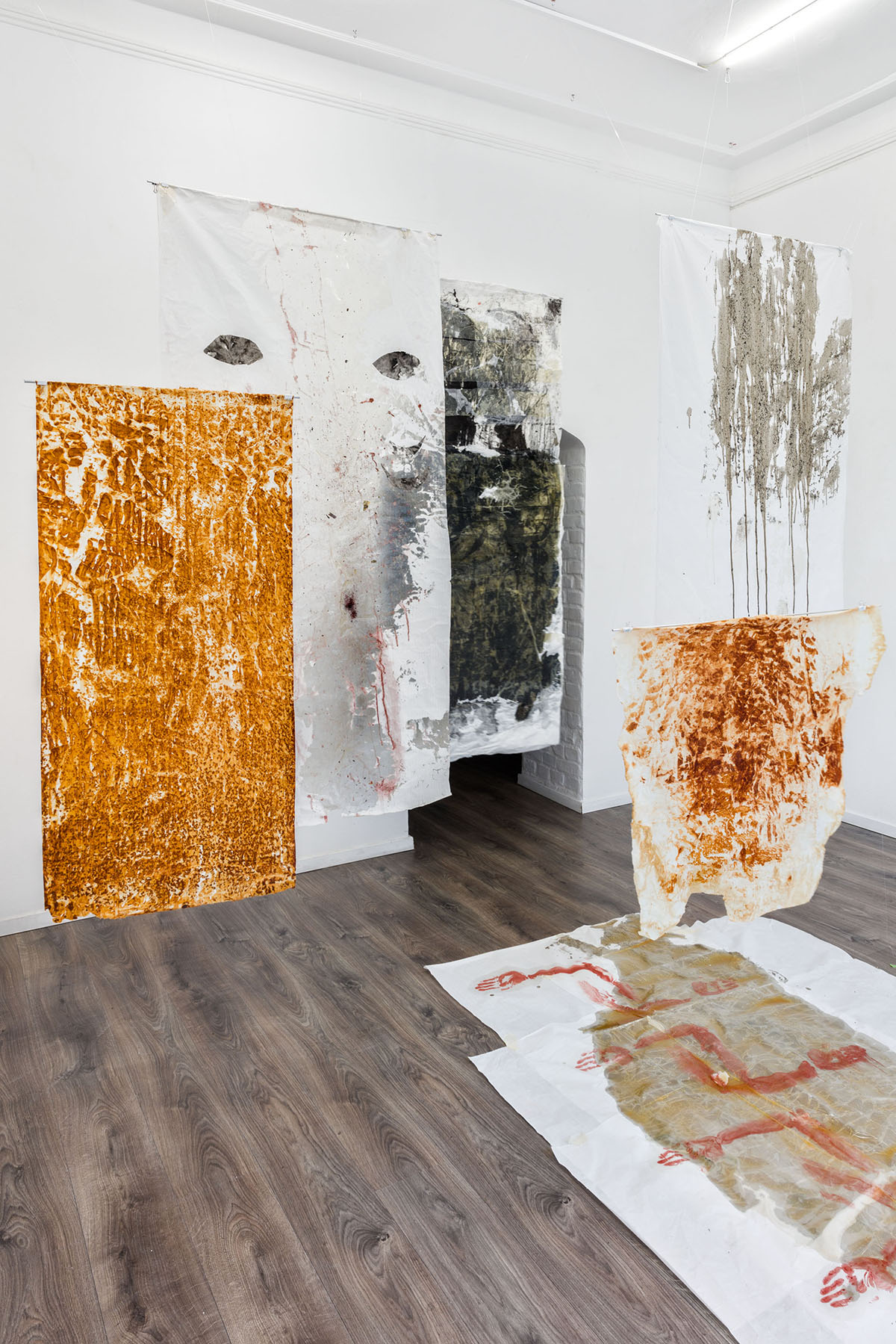
My natural habitat…
is mostly in the nature.
How and where do you create your art work?
Well, I can say that my creative process consists of many parts. I have a practical approach like experimenting with materials, research within scientific and cultural disciplines and engagement with nature and environment where I am currently working. I collect a lot of stuff in the nature and create little still-lives whom I am giving a new meaning. I often work “out of field” and when if it is possible, I travel a lot and work site-specific. In my opinion, artworks made in specifically chosen space raise a lot of questions about their interaction with the outside world.
Jana Zatvarnická – www.instagram.com/jana.zatvarnicka/




